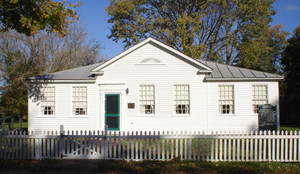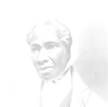HOW THE VILLAGE BECAME KNOWN AS SCHOOLCRAFT…
The Village of Schoolcraft was the first settlement established in Kalamazoo County. In fact, the original Village was platted in 1831, six years before Michigan became a state. Following the War of 1812, President James Madison realized the government would be unable to pay the veterans who had fought in the war. However, there was an abundance of land available for homesteading.
President Madison directed Edwin Tiffin, Surveyor-General, to survey Michigan for homesteading. The expedition was not successful. He found the land in Michigan to be barren, sandy, swampy, and in other words, only capable of producing scrub oak. He further reported the land to be worthless for farming purposes. Lewis Cass, Governor of the Michigan Territory, was angered by the report. Many pioneers decided not to settle in Michigan because of the report.
As a result, the Governor commissioned his own survey and chose Henry Rowe Schoolcraft, renowned for his expertise in Mineralogy, to accompany him and his group. The survey was a success and the report was published in eastern newspapers. As a result, the survey changed the public’s perception of Michigan. This eventually attracted pioneers to Michigan.
Lucius Lyon, who had settled in the area and who had also been a member of the Cass expedition, as well as a friend of Schoolcraft, decided to name to Village in his honor.
 Underground Railroad House
Underground Railroad House
613 East Cass Street
Schoolcraft, Michigan
It is a small house but in the 19th century, it played an important part in the Nation’s history. In the early 1840’s, people sympathetic to slaves seeking to escape from the South organized a system by which they could reach freedom in Canada safely and quickly. Since it was illegal to assist escaping slaves and, therefore, kept secretive, this system was called the Underground Railroad. Arrangements were made for overnight sanctuary for the fugitives in private homes, called Stations, and for transportation to the next hiding pace in their journey.
When the Underground Railroad passed through Southern Michigan,
Dr. Nathan Thomas, an ardent Quaker Abolitionist living in Schoolcraft was asked to open his home as a Station. He quickly agreed for he had been providing such sanctuary for many years. Dr. Thomas, the first physician in Kalamazoo County, had built a small two-room office on Cass and Centre Streets in 1835. After his marriage to Miss Pamela Brown in 1840, he added two wings to the original structure and raised the roof to allow two rooms upstairs.
During the twenty years, the Station was in operation, 1,000 to 1,500 escaping slaves were given food, shelter, medical aid, and encouragement. The home was often crowded for the four Thomas children were born during those years. Yet, there was always room for the unexpected guests and Mrs. Thomas’ hours were full with extra meals to cook and beds to be made ready.
 Shortly after the Civil War, Dr. Thomas built on the same corner, a new, palatial brick home. The old frame house was retired and moved to its present location on East Cass Street in 1868. Here it has remained for over a century and a quarter.
Shortly after the Civil War, Dr. Thomas built on the same corner, a new, palatial brick home. The old frame house was retired and moved to its present location on East Cass Street in 1868. Here it has remained for over a century and a quarter.
In 1975, the Underground Railway House was purchased by the Schoolcraft Historical Society. Since that time, the house has been restored to its present status and listed in the National Register of Historic Places.
The Underground Railway House now stands as a tribute to the courage of those who would not tolerate slavery and south freedom, and of those who gave them aid in their flight. Additionally, the house provides an example of life in Southwestern Michigan during the middle years of the 19th century.
The Historic Schoolcraft Logo
Oak Tree: Author James Fenimore Cooper wrote Oak Openings, a book about Schoolcraft, after visiting in the first half of the 19″ century.
House: The Dr. Nathan Thomas house was a station on the Underground Railroad. He was the first physician in West Michigan.
Arrowheads: Offer tribute to the Native Americans who settled here prior to the arrival of the European- descended newcomers.
Plow: The sale of prairie lands attracted new settlers to Schoolcraft, the site of the first settlement in Kalamazoo County.
Beehive: The first settler, Bazel Harrison, was a character in Oak Openings known as “The Bee Keeper”.
